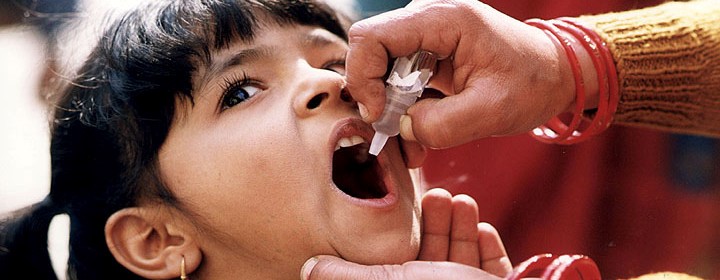Polio Treatment

It is a matter of great success that India has officially brought down its rate of polio to zero – but the efforts do not end with the milestone. Keeping the disease at bay requires a simple process of vaccination, and that ensures a longstanding sense of commitment in making sure that every generation is protected. A part of making sure this happens is to ensure that there is awareness.
Polio is a contagious illness that is caused by a virus. In its most severe manifestations, polio can cause paralysis, difficulty in breathing and even death. Polio is usually prevented by inoculation through the administration of an inactivated poliovirus vaccine (IPV). Immunity after a booster dose lasts a lifetime. There are different kinds of polio – non-paralytic polio that includes the same mild and flu-like symptoms such as fever, sore throat, headache, vomiting, fatigue and muscle weakness; paralytic polio, which leads to paralysis, as the name suggests – and can affect the spinal cord, brainstem or both. There is also something known as the post-polio syndrome, which comprises a series of symptoms that set in with time.
The major cause for polio is a virus called the poliovirus, and it resides only in humans. It enters the environment through the faeces of the infected person, and spreads through the faecal-oral route especially where there is inadequate and insufficient sanitation. It can also spread through contaminated water and food, and even through direct contact with a person who is infected with the virus. Polio is quite contagious, and a person living with someone who has been recently infected, is likely to be infected. It is also possible for people to be carriers of the poliovirus, without knowing it, in their faeces.
There is no known cure for polio, therefore the focus is on attending on the symptoms and increasing comfort for the patient, while also keeping other complications at bay. Some of the most common supporting treatments include such things as bed rest, pain relievers, portable ventilators where there are issues breathing, moderate exercise to prevent deformity or loss of muscle function and a nutritious diet.
Preventing polio is perhaps the best bet to ensure that you remain safe and do not contract the disease. To ensure that you keep polio at bay, simple acts of washing hands and keeping clean is useful, and vaccinating your children at the earliest is exceptionally important.
References:
http://www.mayoclinic.org/diseases-conditions/polio/basics/treatment/con-20030957
